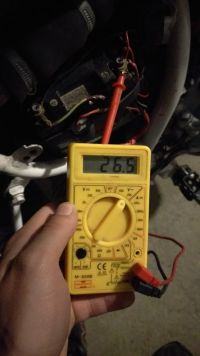Hello. I had a small problem with electronics that I managed to solve, but in the meantime I talked to the gentleman from the electronics store and told me to check on a fired motorcycle there is sometimes no AC current, it should show 0volt. I solved the problem, but I checked it out of curiosity and the meter showed around 26 volts, is everything okay, should there be something like that?
the motorcycle is a yamaha dt125
the motorcycle is a yamaha dt125



